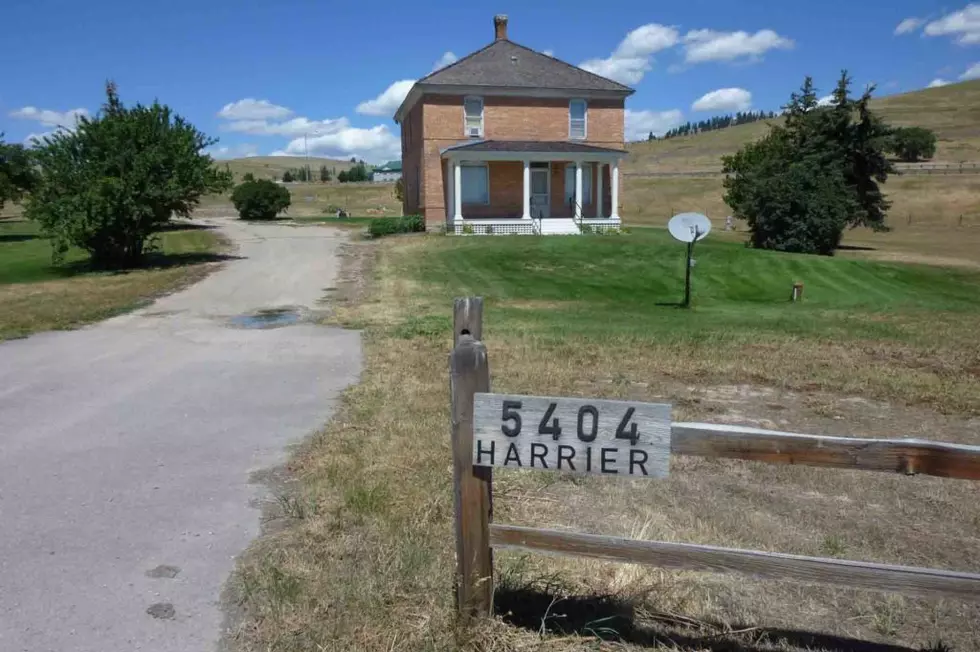
Missoula County commissioner eyes heritage status for historic LeLonde Ranch
When Missoula County funded a feasibility study to assess the condition of an historic valley ranch two years ago, the results were surprising, suggesting it could cost hundreds of thousands of dollars to repurpose the site while retaining its historic integrity.
While an all-at-once approach proved unfeasible, one Missoula County commissioner believes the county can still achieve its goal of preserving the LeLonde Ranch by taking a more incremental approach and doing it over time.
Garnet Ghost Town and the historic Moon Randolph Homestead could serve as models, according to Commissioner Dave Strohmaier.
“I pitched the initial idea designating the LeLonde Ranch as a county heritage park,” Strohmaier said. “It's something we haven't done in the past. We've wrung our hands for a good while with this site.”
Several efforts to identify the property's future have failed over the years, from its proposed use in 2016 as a fruit orchard with a kitchen and aquaponics system, to a potential rest stop and visitor's center.
For one reason or another, such proposals came and went, prompting the county to contract A&E Architects in 2017 to assess the condition of the ranch's seven acres and its collection of buildings.
While the results of that study proved more costly than the county had hoped, Strohmaier is still working for a solution. He committed last year to establish a working group to explore other tools that could preserve the 19th century ranch.
Along the way, he also has met with historically minded entities, including the BLM, which manages the Garnet Ghost Town – established in 1895 with the placement of a stamp mill to crush ore. He and supporters also toured the Moon Randolph Homestead, which dates to 1889 when Ray and Luella Moon filed a claim on 160 acres above Missoula.
“The homestead is really a close analogy to this site,” Strohmaier said. “They've taken over many years a very incremental and phased approach. So maybe we begin with limited interpretation and accessibility to the public to build interest and support, and establish a friends group, and take a much slower, phased approach while looking for outside funding.”
The LeLonde Ranch is one of the few remaining historic ranches in the Missoula Valley. It consists of several buildings that include a log cabin dating back to 1877, when Adam LeLonde was “proving up” his land.
The precise date of the ranch house is unknown, though historians believe it was built after 1888 using materials from the Hollenbeck Brickyard, once located two miles south of the home.
“This is one of the few sites in Missoula that, one, is in public ownership and two, that really demonstrates the progression of agricultural history from its earliest beginnings to the modern era,” Strohmaier said. “You have on the site what I've been told is the oldest standing structure in Missoula County. That in and of itself is significant.”
The ranch and its remaining 7 acres are now bounded on all sides by the county’s Development Park and Interstate 90. The park has been reserved for technology and industrial uses, though the county remains interested in preserving the ranch for the proper tenant.
Strohmaier believes the ranch and its surroundings, including Big Sky Brewing and the Missoula Winery, tell a story of Missoula's evolution, starting with its agricultural roots.
“Clearly, there's a different sense of place between LeLonde and Moon Randolph,” Strohmaier said. “When you're at Moon Randolph, you really can visualize yourself 100 years ago. But the drawback there is that it's remote, not many people know about it and it's difficult to get to. Just the opposite is true with LeLonde.”
The ranch's location and history have coaxed Strohmaier and supporters to explore the creation of a heritage park. It would be the county's first, if established, and it would need buy-in from the county's Board of Commissioners, something that hasn't come yet.
Strohmaier envisions the site being managed through the county's parks and trails program.
“It would be our first heritage site,” he said. “It's an opportunity to re-envision what it is we're about. In parks, trails and open lands, we've ordinarily looked at our mission as being developed parks or conservation lands, but heritage is something that's been notably lacking in our mission and vision.”
Other historical properties around Missoula have been relocated over the years, some making their way to Fort Missoula. Relocating the historic cabin would be a last resort and something Strohmaier would like to avoid as the county considers the ranch's future.
As it stands, he said, the site still retains its historical integrity.
“When you relocate something, you completely sever the sense of place and the tie to land on which that historic element is located,” he said. “For me, there's a lot of steps between where we are now to when you seriously contemplate picking up the cabin and locating it somewhere else. We have plenty of relocated structures at Fort Missoula, and we don't need another cabin.”
